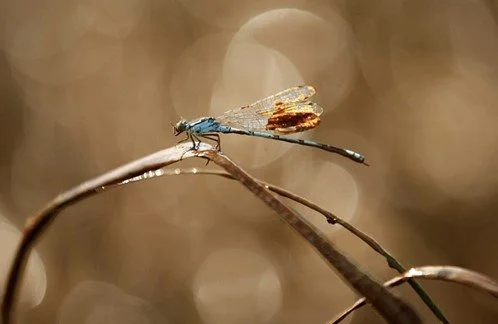Gerald Herbert, American
Oiled Dragonfly, 2010
Through photography, Herbert documented the Deepwater Horizon oil spill’s impacts on wildlife in Louisiana. This photograph depicts a dragonfly perched on a piece of marsh grass that is covered in oil. The dragonfly’s wings are also stained with oil, tainting what should be a beautiful, natural sight. The color juxtaposition of the blue dragonfly being consumed by the brown oil elicits feelings of sadness as we see the dragonfly helpless against the destruction of oil. Herbert uses art to show people why we should care about the large and small-scale impacts of oil spills on the environment. Label by Bayleigh Albert




